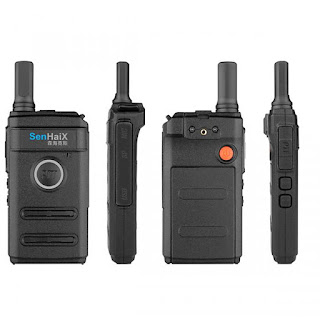A walkie-talkie (more formally known as a handheld transceiver, or HT)
is a hand-held, portable, two-way radio transceiver. Its development during the
Second World War has been variously credited to Donald L. Hings, radio engineer
Alfred J. Gross, and engineering teams at Motorola. First used for infantry,
similar designs were created for field artillery and tank units, and after the
war, walkie-talkies spread to public safety and eventually commercial and
jobsite work.[1]
Typical walkie-talkies resemble a telephone handset, with a speaker
built into one end and a microphone in the other (in some devices the speaker
also is used as the microphone) and an antenna mounted on the top of the unit.
They are held up to the face to talk. A walkie-talkie is a half-duplex
communication device. Multiple walkie-talkies use a single radio channel, and
only one radio on the channel can transmit at a time, although any number can
listen. The transceiver is normally in receive mode; when the user wants to
talk they must press a "push-to-talk" (PTT) button that turns off the
receiver and turns on the transmitter.
https://www.409shop.com.hk/shop.php

沒有留言:
發佈留言